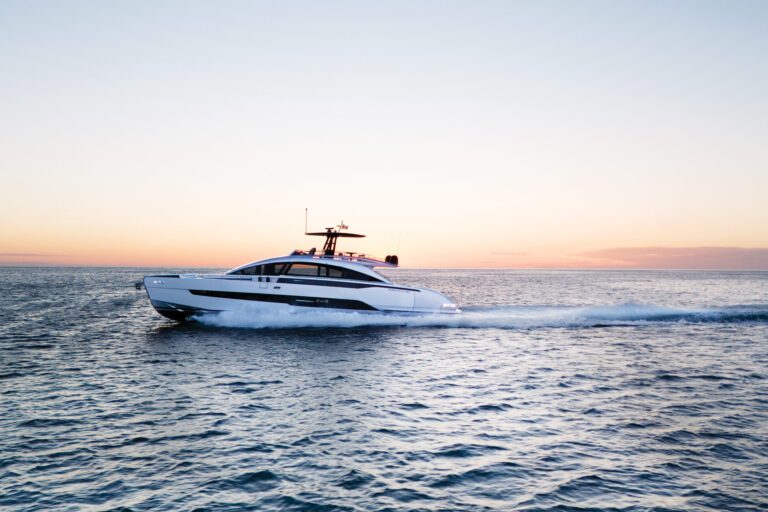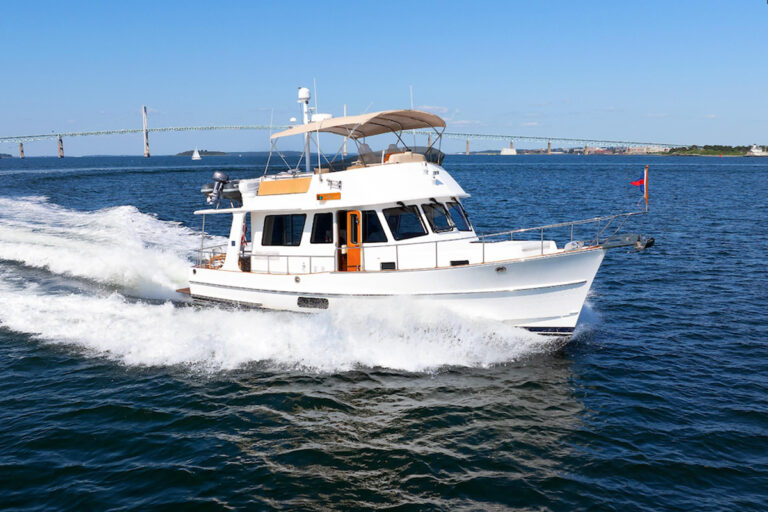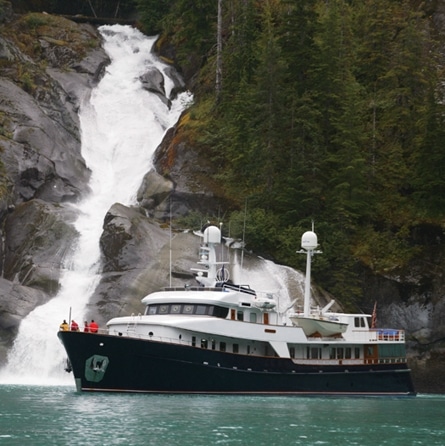
ytgmay09addwater445.jpg
It started in the most unlikely of ways: In 1949 Fred “Cap” Stabbert abandoned his construction business to try life aboard a crabber.
He took to it like a fish to water and, for generations of Stabberts to come, there was no going back. The first boat to enter the family fleet was a 125-foot World War II-surplus wooden minesweeper that Cap converted to a medical missionary ship. The M/V Willis Shank plied most of the west coast of the Americas, bringing medical help to isolated communities of Alaskan Inuits and Honduran Moskitos and ferrying occasional freight.
Dan Stabbert, Fred’s son and the current owner and president of Stabbert Marine Group (SMG), grew up on the boat. He took his first offshore trip when he was three days old and spent the rest of his childhood aboard the Willis Shank, learning everything there was to know-in fact, he was the ship’s de facto chief engineer by the time he was 13 and fully licensed at 17.
When Dan met his wife Cheryl, he went ashore to live, but swallowing the anchor never crossed his mind. Before long, he had bought his own tug, and then a fleet of tugs. At the same time, Dan started speculating on “hidden gems.” There was the old passenger supply vessel, that-among other tasks-wound up serving as the floating headquarters for the clean-up of the Exxon Valdez oil spill. Next was the offshore supply vessel he converted to a Bering Sea fishing boat. Since then, there have been a steady stream of conversions- about 30 in all. It’s a daunting prospect to take a run-down ship and give it a second chance. So Dan is justifiably proud that he’s only lost money on one.
“Dan’s a rainmaker,” said Ron Pauley, the company’s chief operating officer. “He has a real gift for finding old boats that nobody else would take a risk on and bringing them back to life.”
Old boats is an understatement. Stabbert, which operates the luxury conversion portion of their business as Venture Pacific Marine, brings good ships in bad shape back from the brink. The 125-foot Delta Taurus hit a reef off Indonesia’s Komodo Island and was declared a total loss. Stabbert bought her hull, gutted her, and did a top-to-bottom refit that became the glistening Centurion. (Type “Centurion” in the site search key for a complete story on chartering Centurion in Costa Rica.) When a fire broke out on the 143- foot Marjorie Morningstar, Stabbert raised the superyacht Devotion from her ashes. In 2004, Stabbert Maritime did a complete refit of the 172-foot Revelation (ex-Patagonia) in a mere three months-also extending her hull by four feet. No wonder the owner returned to Stabbert in 2006 when he wanted to add a helicopter pad.
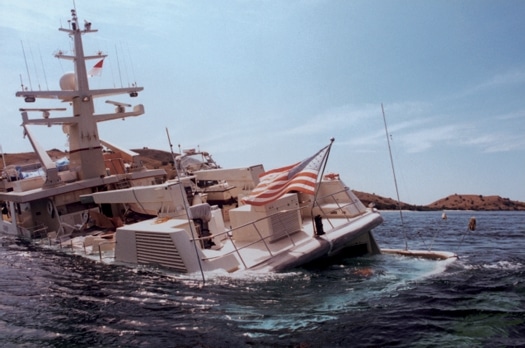
| |
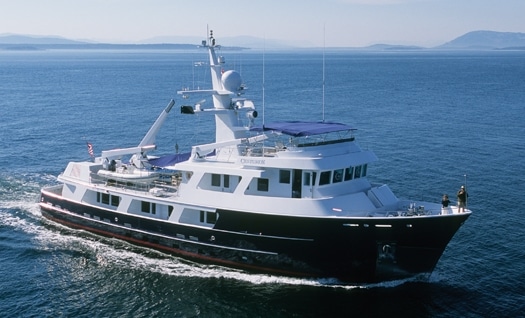
|
However, luxury conversions like these are just one portion of the Stabbert business. Ocean Services, LLC, is the part of the operation that does similar work on commercial craft. Ocean survey vessels, research vessels, cable layers you name it, they do it. “Around here, we say If it floats, we’ll consider it,” jokes Daniel Stabbert. Daniel, who’s in charge of marketing and project management for SMG, and his sisters Lindsay and Chela, who now work in the charter and crewing end of SMG, are the third generation of Stabberts in the business. They spent almost as much time afloat in their youth as their father did, working on multiple vessels in far-flung places. Daniel believes that this type of varied, hands-on experience is an important aspect of Stabbert’s multi-faceted success.
“We are a cradle-to-grave company-but smaller, more boutique-y,” Daniel explains. “We give the same customer service, and the same quality work, whether you bring us a crab boat or a superyacht.”
This is especially relevant to the third prong of SMG: Stabbert Yacht & Ship Shipyard (SYS), which undertakes all of the mechanical and service work for the company’s many projects. There are plans afoot to level the old wooden sheds that currently house Stabbert’s yard. In the same spot, they’re planning to build a state-of-the-art facility. Right now, there are about 100 workers in this yard, another 100 in their Houston satellite yard, and 150 to 200 Stabbert crew members on vessels around the world.
If it seems like there’s nothing these guys can’t do, it’s because there isn’t. Stabbert is a vertically integrated company, with the ability to break big jobs into smaller pieces and expertly field them through separate specialty units. That means they not only get a bigger piece of the pie-they get the whole pie. And that kind of top-to-bottom diversification, combined with a commitment to customer service, is especially valuable now.
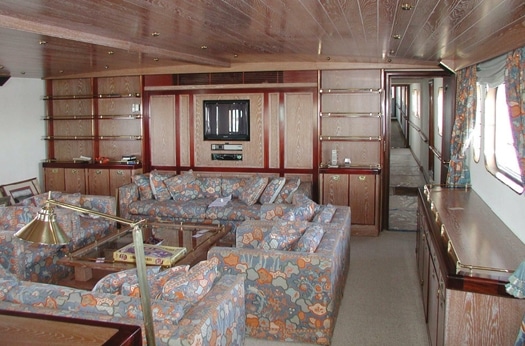
| |
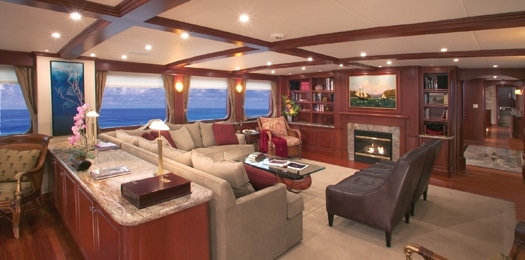
|
“In this tough economy, we’re always asking ourselves what’s our edge, how do we maintain this growth spurt?” says Ron. That kind of creative thought has lead Stabbert to offer financing to new owners who buy conversion proposals-a smart move that shares the risk, but also reassures a new owner that the shipyard shares the goal of getting the job done.
“We have a unique software system that allows clients to check the accounting status of their job in real time,” Ron notes. “They can see every nickel that’s been spent-and the accounting is broken down into task items.” This lets an owner see, for instance, that his job is running on schedule and under budget on the electrical work. So, maybe some of the extras that didn’t make the first cut get added back into the job. “More often then not, owners actually decide to spend more money when they have this level of control,” explains Ron.
Stabbert’s expertise is complemented by the fact that some of the maritime world’s best mechanics, technicians, marine suppliers, and craftsmen call Seattle home. In fact, Dan’s brother Don owns and runs Salmon Bay Marine Center, (www.salmonbaymarinecenter.com), just across the canal. It’s the largest superyacht facility on the West Coast and Westport, Fraser, Grand Banks, and other nautical heavy-hitters have offices there. The Ballard area, where Stabbert is located, is ground zero for work boats, too. That’s why you’ll find the Deadliest Catch fleet, as well as less televised fishing boats, putting in for work here before they start another season in the Bering Sea. “We know that when a ship leaves our yard, it has to be rock solid,” Daniel adds, mentioning their 205-foot research vessel Ocean Pioneer. Right now, Stabbert has a crew refitting the ship with a Dynamic Positioning System. They have a month to complete this complicated systems integration and just one chance to get it right: When Ocean Pioneer casts off, it’s for a 22,000-mile journey as a tsunami buoy tender in Indonesia.
So, what new seas are left to explore for the yard that does everything? “We are totally committed to the superyacht arena,” says Ron. “It’s here today, and it will be here tomorrow.” He is quick to add that Stabbert is also committed to construction of new commercial vessels and will never abandon their workboat origins.

| | |
But there’s no denying the excitement they show about a contract they’re close to signing for their first new build, a 110-foot superyacht. Daniel grins, “We’ll finally get to break a bottle.” If that’s their plan, Stabbert’s next move will probably be to buy a vineyard.
Stabbert Maritime Group,(206) 547-6161; **www.stabbertmaritime.com**

